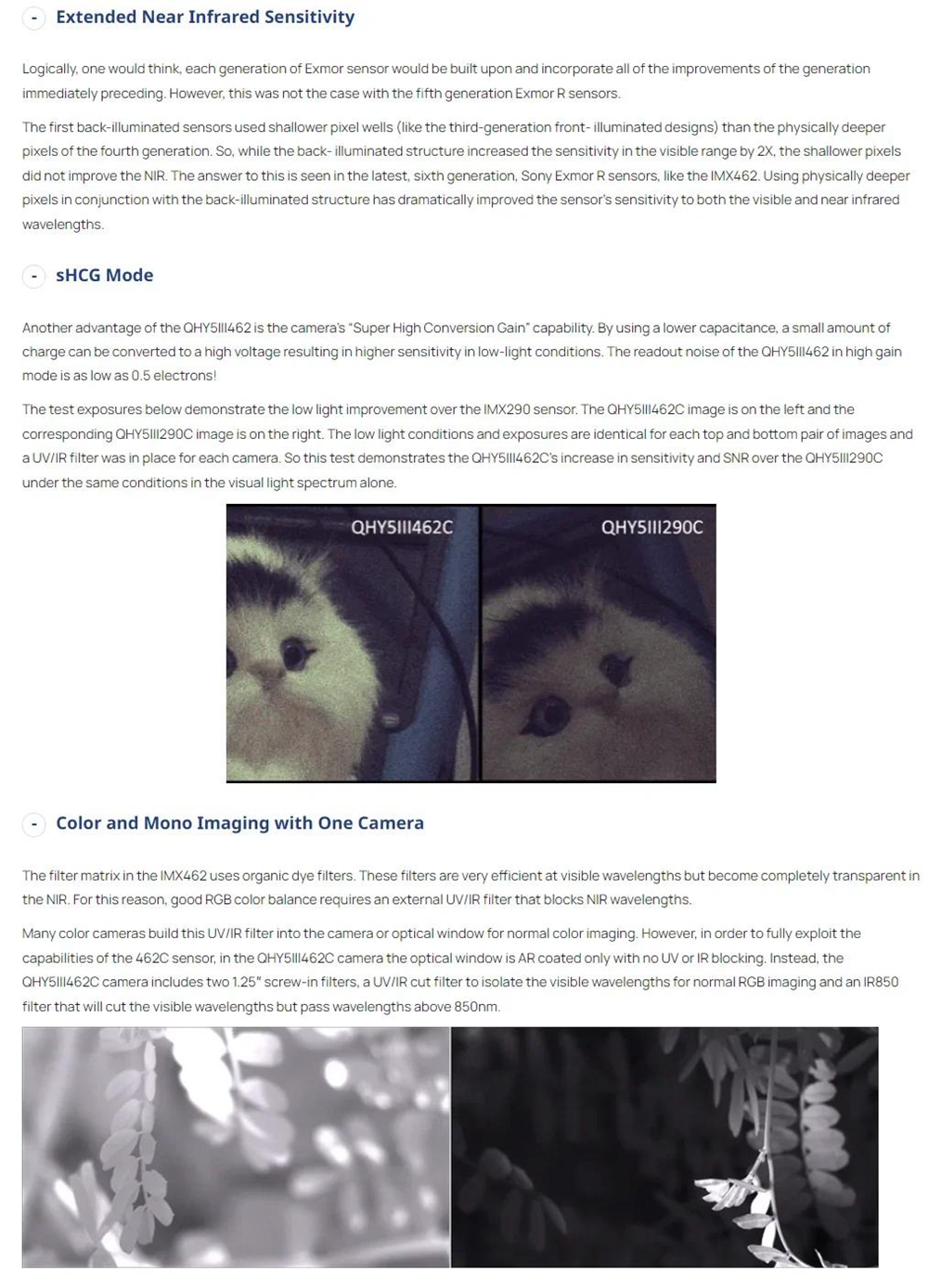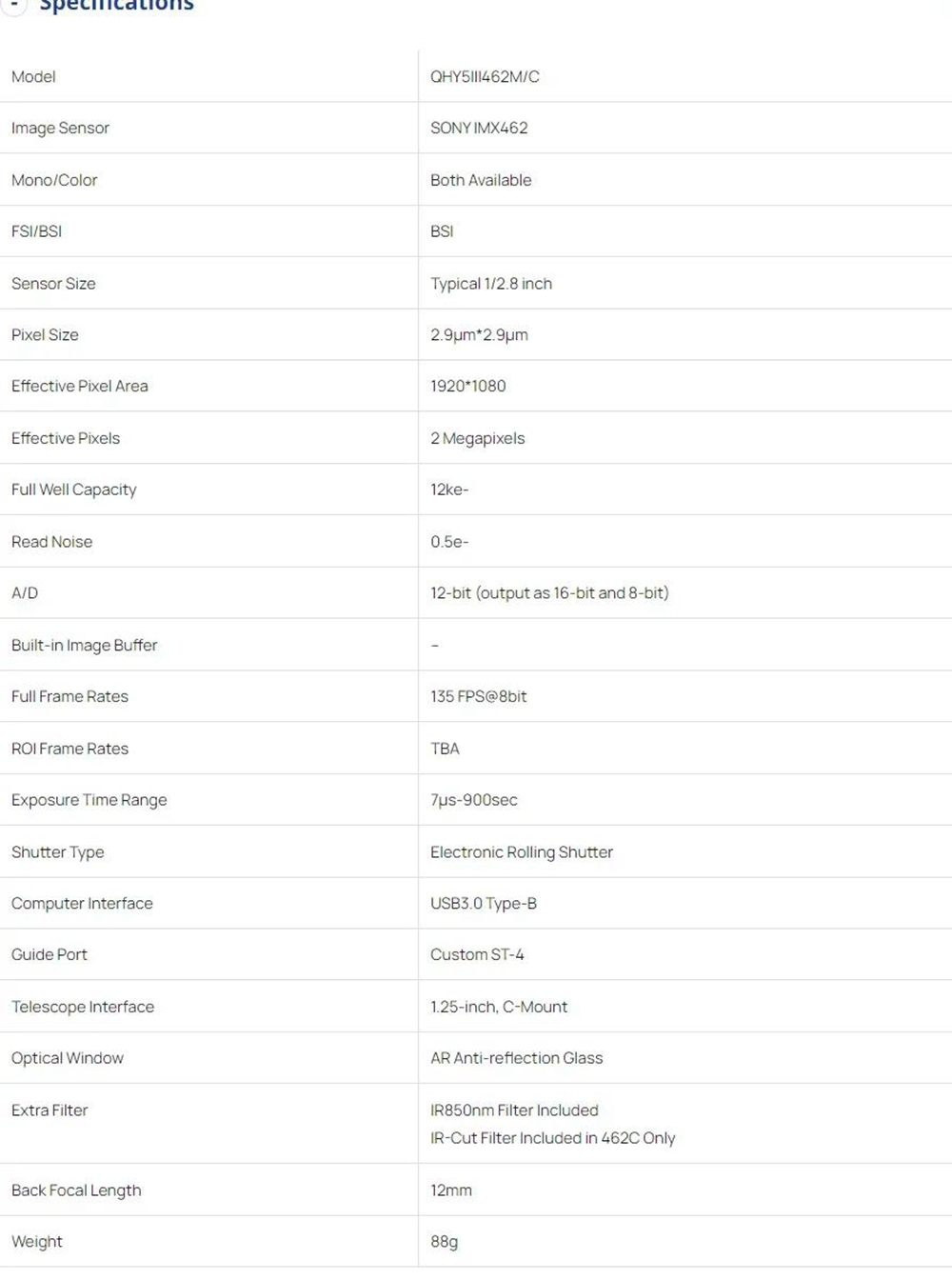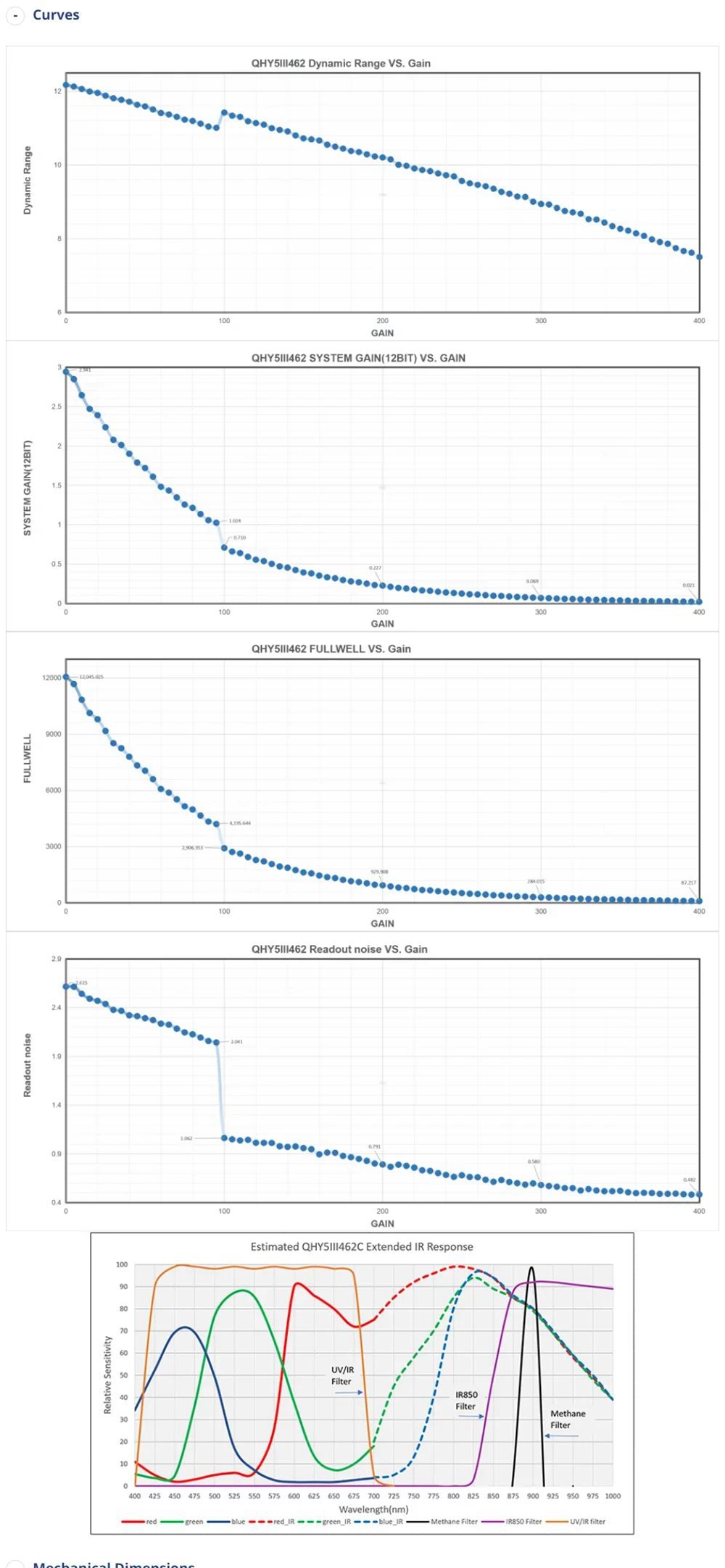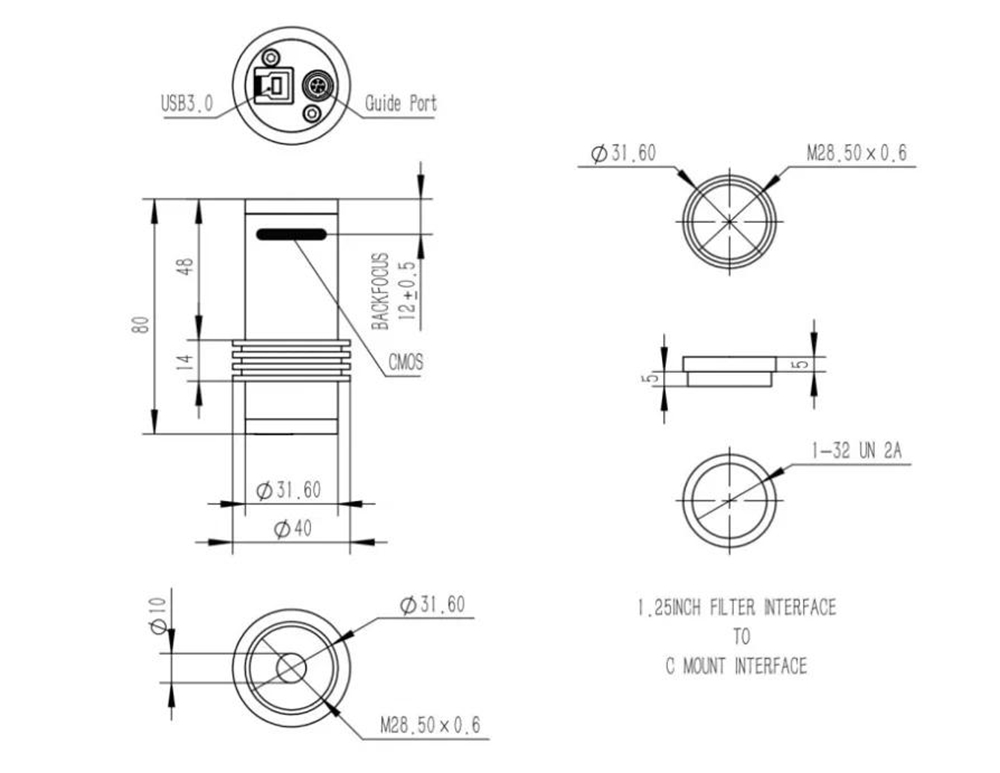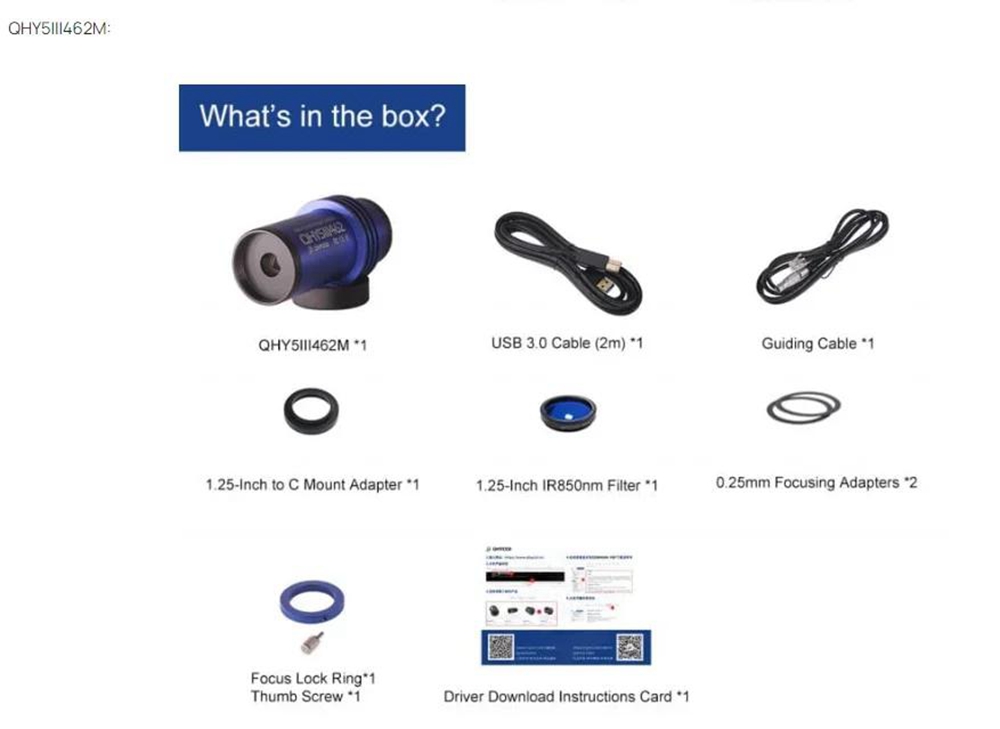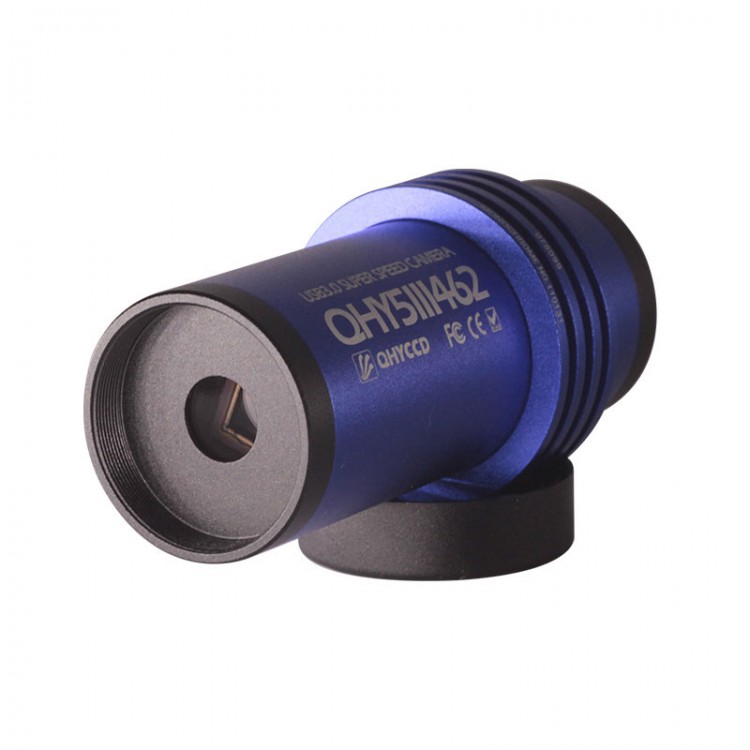
| Quantity | 3+ units | 10+ units | 30+ units | 50+ units | More |
|---|---|---|---|---|---|
| Price /Unit | $263.54 | $258.16 | $250.10 | $239.34 | Contact US |
 Scorpio Astro 2-inch SHO Filter Set Astronomical 3nm Ultra Narrow Band Telescope Filter with Lens Frame
$448.74
Scorpio Astro 2-inch SHO Filter Set Astronomical 3nm Ultra Narrow Band Telescope Filter with Lens Frame
$448.74
 Scorpio Astro 2-inch OIII Filter Astronomical 3nm Ultra Narrow Band Telescope Filter with Lens Frame
$216.03
Scorpio Astro 2-inch OIII Filter Astronomical 3nm Ultra Narrow Band Telescope Filter with Lens Frame
$216.03
 Scorpio Astro 2-inch Ha Filter Astronomical 3nm Ultra Narrow Band Telescope Filter with Lens Frame
$216.03
Scorpio Astro 2-inch Ha Filter Astronomical 3nm Ultra Narrow Band Telescope Filter with Lens Frame
$216.03
QHYCCD QHY5III462M Mono Guide Camera IMX462 Sensor USB3.0 BSI High Sensitivity Planetary Camera
Description:
- The QHY5III462 camera uses the Sixth Generation Sony 2.1 megapixel IMX462 STARVIS CMOS sensor. The pixel size is 2.9um making it the same size and resolution as the sensor used in the QHY5III290 camera that has been so successfully used for planetary imaging by some of the best planetary imagers in the world. Like other cameras in the 5III series, the QHY5III462 is USB 3.0 powered and controlled. No additional power is required.
- The IMX462 sensor is back-illuminated and incorporates new technology that gives it some significant advantage over other planetary cameras: First, the IMX462 sensor has sHCG (Super High Conversion Gain) for very low read noise at high gain. This is ideal for stacking hundreds or thousands of short planetary images. Second, it is exceptionally sensitive in the NIR.
- In this latest generation of sensors, the photodiode portion of the pixel well is physically deeper than in previous Sony BSI sensors, allowing photons of longer wavelength to penetrate deeper into the substrate. This dramatically increases the sensor’s sensitivity to red and near infrared (NIR) light. The RGB filters over the pixels become transparent at NIR wavelengths, so the sensor displays almost equal peak sensitivity to NIR light as it does to light in the visible spectrum.
- The peak QE in the NIR around 800nm is as high as the peak QE in the visible wavelengths. For planetary imagers using a methane filter that passes light around 880nm this is welcome news.
BSI:
- One benefit of the back-illuminated CMOS structure is improved sensitivity. In a typical front-illuminated sensor, photons from the target entering the photosensitive layer of the sensor must first pass through the metal wiring that is embedded just above the photosensitive layer. The wiring structure reflects some of the photons and reduces the efficiency of the sensor.
- In the back- illuminated sensor the light is allowed to enter the photosensitive surface from the reverse side. In this case the sensor’s embedded wiring structure is below the photosensitive layer. As a result, more incoming photons strike the photosensitive layer and more electrons are generated and captured in the pixel well. This ratio of photon to electron production is called quantum efficiency. The higher the quantum efficiency the more efficient the sensor is at converting photons to electrons and hence the more sensitive the sensor is to capturing an image of something dim.
Package Included:
- 1 x Set of Guide Camera
